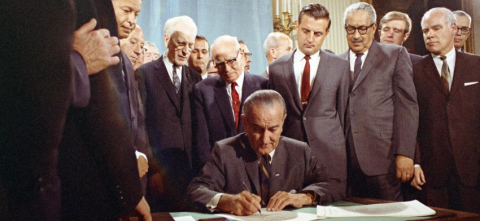National Fair Housing Month is held every April to celebrate the anniversary of the passage of the 1968 Federal Fair Housing Act. At the same time, it is an opportunity to increase our efforts to end housing discrimination and raises awareness of housing rights.

Vermont has always been one of the least diverse states in the country. Historically, less discrimination and segregation was written into our legal codes than in other parts of the county, leaving many Vermonters to assume that we do not have the same problems with fair housing. However, many groups of Vermonters have faced and continue to face significant challenges in accessing housing. A 2014 report from Vermont Legal Aid found numerous instances of landlords declining to rent to Black Vermonters and renters of foreign origin in favor of White renters. The report also found that landlords often resist renting to families with children and renters with disabilities, both of which are protected groups under the Fair Housing Act. A report from the State of Vermont found that as many as 70 percent of newly constructed apartments had at least minor issues with ADA compliance and another 10 percent had significant compliance issues.
Inequality manifests not only in outright discrimination, but also a lack of advantages and opportunities. Vermonters of color and disabled Vermonters are far more likely to be cost-burdened, paying more for housing than they can afford. The rate of homeownership among Black Vermont households is just 22 percent according to the latest Census Bureau estimates, while the rate for White households is 71 percent. Nationally, the rate of homeownership among Black households is 42 percent.
In many ways, Vermont has been a trailblazer in legislation and policy to protect equal opportunity. Vermont’s Fair Housing Act is more expansive than the Federal Fair Housing Act, adding protections against housing discrimination on the basis of marital status, age, sexual orientation, gender identity, and receipt of public assistance, in addition to the federal prohibition of discrimination on the basis of race, color, religion, national origin, and sex. Yet it is clear that we still have much work to do to ensure that all Vermonters have access to safe, decent, and affordable housing.
Vermont Legal Aid and CVOEO’s Fair Housing Project have a variety of housing information available for those who wish to learn more, including resources for Vermonters who are facing discrimination. The Thriving Communities initiative has published a calendar of events for Fair Housing Month, including landlord education and renter’s rights workshops, community awareness dinners, and a public art contest.
